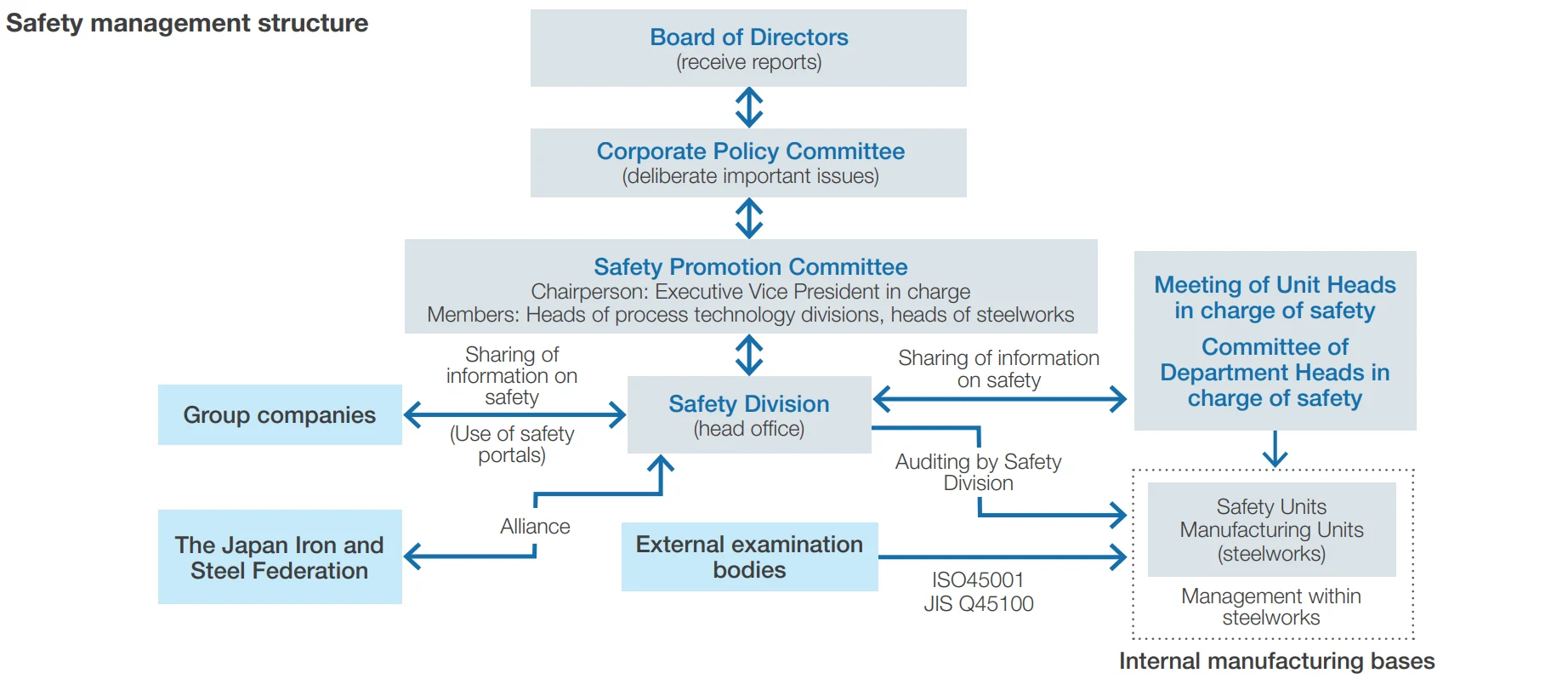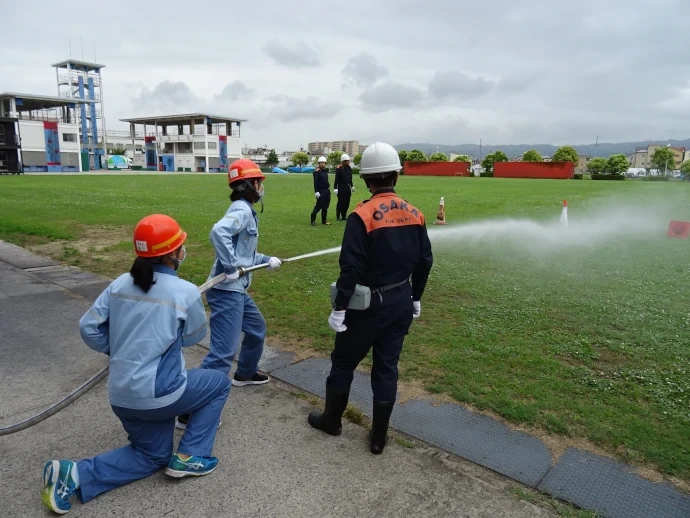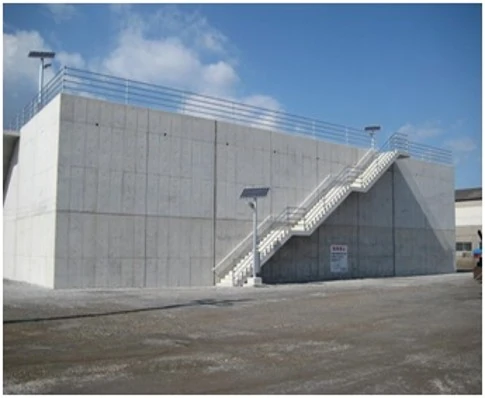Disaster Prevention
Basic Policy
For our company, trust, and coexistence with our customers, local communities, and society are of the utmost importance, and it is important for the continuity of our company that we do not cause preventable accidents that occur despite efforts for disaster prevention that may damage our credibility. For this reason, our disaster prevention promotion activities aim to improve disaster prevention management while building mechanisms and systems for autonomous and continuous activities, taking measures to reduce disaster risks of, and preventing accidents that can be preventable.
Organization for Disaster Prevention

Target and KPI
- Elimination of disaster risks and group-wide sharing of effective measures
-
- Zero serious disaster-related accident
Initiatives and Achievements
As initiatives to reduce disaster risks, Nippon Steel’s Plant Safety Division undertakes these three: 1) identification of disaster occurrence risks based on risk assessment for each plant and for each of their process technology divisions; and implementation of measures on this basis for software and hardware to reduce risks and control residual risks; 2) corporate-wide implementation of measures against risks exposed by disaster to prevent recurrence; and 3) self-management of monitoring concerning the appropriate implementation of points 1) and 2) by persons in charge of disaster prevention in each work; understanding of the control status based on the management hearings at the head office, and implementation of corrections if needed. In our targeting of a zero score for serious accidents that can be preventable, we promote essential disaster prevention improvement measures in manufacturing sites.
Efforts to prevent the occurrence and recurrence of accidents
As part of disaster prevention efforts, we conduct activities to prevent occurrence and recurrence of accidents.
In disaster risk assessment activities, in addition to identifying the causes of accidents and implementing countermeasures, we work to reduce risks by establishing and standardizing company-wide disaster risk assessment guidelines and sharing information on the identified risks as a company-wide system.
As for the enhancement of initial response, we are focusing on initial response training in addition to hardware measures for early detection in order to enable the minimization of damage in the event of a disaster. We are devising ways to make it more practical in each workplace; such as the off-day or night drill and drills with no pre-fixed scenario.
We have so far promoted the enhancement of the corporate-wide disaster management infrastructure (standardization). In order to raise the level of our activities, we will implement initiatives to support disaster prevention activities at manufacturing sites, including activities conducted by managers, to make our disaster prevention activities sustainable through the spread and enhancement of safety culture.
[Specific disaster prevention initiatives]
Prevention of disaster occurrence (mitigating risks exposed by disaster)

- Identify and assess risks in manufacturing sites based on the corporate-wide guidelines; manage residual risks; and develop and promote permanent measures
- Identify accident risks related to operating processes and facility design and promote the drafting of permanent measures by outside experts and the process technology division in the head office
- Strengthen disaster prevention management in the facility measures of the Medium to Long-Term Management Plan
Enhancement of initial response
- Enhance drills for initial response (drills at all plants in all steelworks; enhanced drill programs; use of dedicated training facilities, improvement of hazard sensitivity by use of CG, etc.)
- Improve the fire-fighting capacity of the in-house fire defense function, in cooperation with experts (joint fire drilling with public firefighters; training for leaders, etc.)
- Prevent forgetting of past incidents and accidents (panel presentations in training facilities; session for employees to learn about past accidents during training)
Measures to mitigate existing risks (measures for disaster prevention equipment)
- Prevent disaster recurrence; investment in measures for compliance and risk assessment
Auditing disaster prevention
- Voluntary monitoring by disaster prevention organization at each steelworks for regular check-ups and corrective action on the status of disaster prevention activities at the manufacturing work front
- Regular check-up and corrective action on the implementation status of disaster prevention management of all steelworks based on the disaster prevention auditing of the head office
Third-party monitoring toward enhancing safety competency in steelworks
- Assessment of steelworks by an NPO, the Japan Industrial Safety Competence Center
Preparedness measures for earthquakes and tsunami and measures for natural disaster mitigation

- Promotion of measures in preparation for earthquakes in the order of declining importance: 1) human injury prevention, 2) area damage prevention, and 3) minimizing of impacts on production
- Developing disaster mitigation procedures for natural disasters, conducting simulated exercises, and reviewing countermeasures.
Group companies’ disaster prevention management
- Meetings to enhance coordination for disaster prevention management; individual visits to a workplace where a disaster or accident happened or which has risks related to disaster prevention
| Serious disaster-related accidents | 0 |
|---|